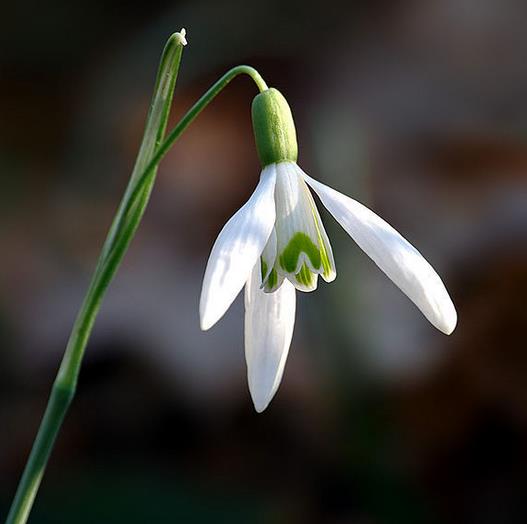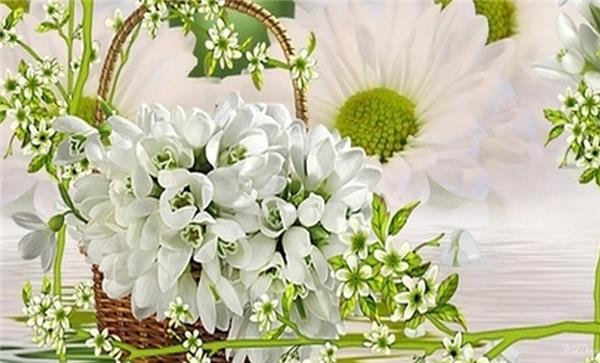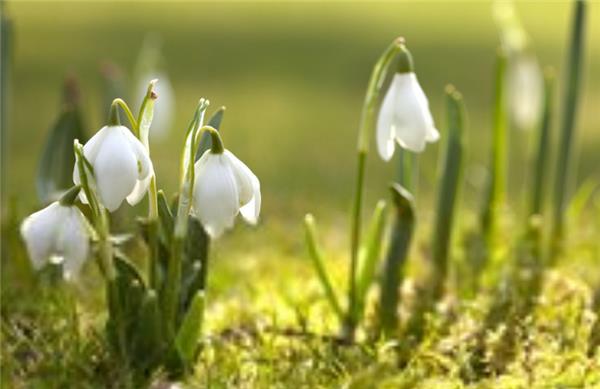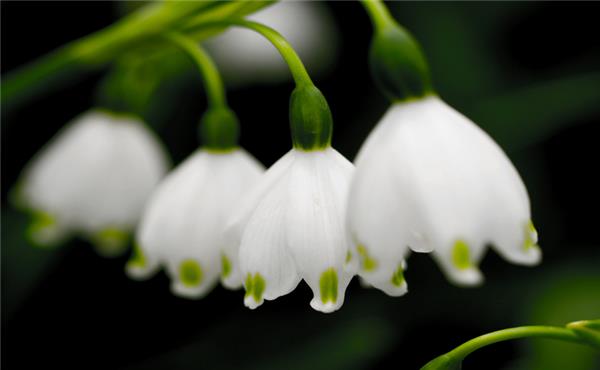Introduction and cultural background explanation of flowers and snow lotus given by angels
Snowflake lotus color white, flower shape elegant, like a shy girl with delicate, snowdrop has a lot of moving legends, now let us take a look at it.

1. Introduction to snowdrop
Snowdrops are bulbous herbs with drooping white flowers. Snowdrops have bulbs. Leaves linear. The flower stem is erect, and there is a flower at the top of the flower stem. The flower is drooping and bell-shaped; the flower is white, with six petals. The petals are divided into two layers, the inner layer and the outer layer each have three petals. The outer petals are longer and more convex than the inner petals. Anthers six, anther pore dehiscent or short longitudinal dehiscent. Ovary 3-celled, fruit capsule. Snowdrops make up the genus Galanthus, which belongs to the Amaryllidaceae family. The Latin name for common snowdrop is G. nivalis。

II. Cultural Background of Snowdrop
legend
The holy snowdrop has long been a symbol of purity and hope. In the biblical story, when Adam and Eve were driven out of the Garden of Eden, Eve looked tearfully at the ground around her. It was cold, there were no flowers, and the ground was covered with snow. Then an angel floated to catch a snowflake, gently blowing, it turned into a snowflake lotus. The angel handed it to Eve and told her to hope that summer would soon come. The angel floated away, leaving behind a wreath of snowdrops. Thus the first snowdrop was born. Snowdrop This poem describes the snowdrop in January, the little snowdrop dotted with everything waiting for the scene, it symbolizes hope, a symbol of the beginning of new life.

III. Morphological characteristics of snowdrop
Plant height 5 - 15cm. Snowdrops have bulbs. Leaves linear. The flower stem is erect, and there is a flower at the top of the flower stem. The flower is drooping and bell-shaped; the flower is white, with six petals. The petals are divided into two layers, the inner layer and the outer layer each have three petals. The outer petals are longer and more convex than the inner petals. Anthers six, anther pore dehiscent or short longitudinal dehiscent. Ovary 3-celled, fruit capsule.
Snowdrop, a common name for a bulbous plant, contains about 20 varieties. Snowdrop is native to Europe and Asia, but it is grown as a garden plant in the United States, flowering late in winter. Snowdrops bloom as early as February, when the ground is usually covered with snow. These hardy plants have long, narrow leaves and a drooping white flower at the top of each slender stalk. The leaves of the common snowdrop are about 6 to 9 inches (15 to 23 centimeters) long, and the stalk may reach 12 inches (30 centimeters) tall. Its small, fragrant flowers have white outer petals and pale green inner petals. Snowdrop is a genus of Asparagus, Amaryllidaceae, with about 20 species. This genus is the earliest bulbous flower to bloom in spring. Any of about 12 species and many varieties of plants of the genus Snowdrop (Amaryllidaceae), native to Eurasia. Bulbous, white flowers bloom in spring. include common snowdrop (G. nivalis) and G. Several species, such as elwesii, are cultivated as ornamental plants for their drooping, sometimes aromatic flowers. It is the first garden flower to bloom in spring. A similar but different species, the snowdrop tree (or silver bell, Halesia carolina) of the Styraceae family, is a tall tree growing in the southern United States and having bell-shaped clusters of flowers. Snowdrop bush (Styrax officialis), native to eastern Europe and Asia Minor, is about 6 m tall and is also unrelated to this species.

IV. Flower Language of Snowdrop
Birthday flower: snowdrop
16th century Spanish aristocrat, St. Francis-Flower of Paul Gil
Since ancient times, Christianity has had the habit of associating saints with specific flowers, which is due to the fact that the church often adorns the altar with blooming flowers when commemorating saints! In medieval Catholic monasteries, all kinds of flowers were planted like gardening centers. Over time, the church combined 366 days of saints with different flowers to form the so-called floral calendar. Most of the monasteries were located in southern Europe, which had a Mediterranean climate and was ideal for growing flowers. Snowdrops of the Amaryllic family were chosen to be sacrificed to St. Francis. Paul Gill's flowers. He was a prominent 16th-century aristocrat known for abandoning his title to become a Christian preacher.
This is the snowflake presentation, I hope it helps you.
This is the snowflake presentation, I hope it helps you.
- Prev

Introduction and culture skills of European silver lotus how to grow good European silver lotus
Introduction and culture skills of European silver lotus how to grow good European silver lotus
- Next

Introduction and propagation of green balloons hanging on trees
Introduction and propagation of green balloons hanging on trees
Related
- Wuhan Hospital Iron Tree Blooming Result Was Instantly Frightened by the Gardener Master
- Which variety of camellia is the most fragrant and best? Which one do you like best?
- What is the small blue coat, the breeding methods and matters needing attention of the succulent plant
- Dormancy time and maintenance management of succulent plants during dormancy
- Minas succulent how to raise, Minas succulent plant pictures
- What are the varieties of winter succulent plants
- How to raise succulent plants in twelve rolls? let's take a look at some experience of breeding twelve rolls.
- Attention should be paid to water control for succulent plants during dormant period (winter and summer)
- Watering experience of twelve rolls of succulent plants
- Techniques for fertilizing succulent plants. An article will let you know how to fertilize succulent plants.

